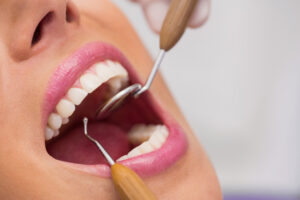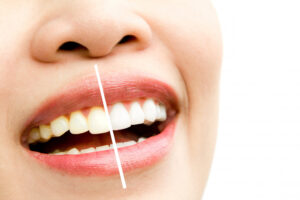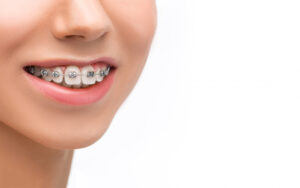
Procelain Veneers
Porcelain Veneers: A Perfect Smile with Cosmetic Dentistry in Miyapur | Enhance Your Smile
If you're dreaming of a flawless smile, porcelain veneers are one of the most effective and transformative solutions available. At Vijay Dental Miyapur, we specialize in Cosmetic Dentistry in Miyapur | Enhance Your Smile, offering expertly crafted porcelain veneers to correct imperfections and give you a radiant, natural-looking smile.

What Are Porcelain Veneers?
Porcelain veneers are thin, custom-made shells designed to cover the front surface of your teeth. They are crafted from high-quality porcelain material, which mimics the translucence and appearance of natural enamel. Veneers are bonded to your teeth, effectively improving their shape, size, color, and alignment for a perfect smile.
Benefits of Porcelain Veneers
1. Enhance Your Smile Aesthetics:
Porcelain veneers are an excellent choice for addressing a variety of cosmetic concerns, including stains, chips, gaps, and misshapen teeth. With Cosmetic Dentistry in Miyapur, we ensure your veneers blend seamlessly with your natural teeth for a flawless appearance.
2. Durable and Long-Lasting:
Porcelain veneers are highly durable, offering a long-lasting solution for your smile makeover. With proper care, they can last 10 to 15 years or more.
3. Natural Appearance:
The porcelain material closely resembles the texture and color of natural teeth, ensuring a realistic and natural look. Your new smile will be both attractive and authentic.
4. Minimally Invasive:
Veneer placement is a minimally invasive procedure that requires only a small amount of enamel to be removed. This preserves the structure of your natural teeth while achieving dramatic results.
5. Stain-Resistant:
Porcelain is resistant to stains from coffee, tea, wine, and other foods, ensuring your veneers remain bright and beautiful over time.
6. Quick Transformation:
Unlike orthodontic treatments or other lengthy procedures, porcelain veneers can transform your smile in just a few appointments.
Dental Bonding
Dental Bonding: A Simple Solution for a Stunning Smile
When it comes to quick and effective ways to enhance your smile, dental bonding is a versatile and affordable option. At Vijay Dental Miyapur, we offer Cosmetic Dentistry in Miyapur | Enhance Your Smile, including expert dental bonding treatments to address minor imperfections and restore the beauty of your teeth. This minimally invasive procedure can make a significant difference in your smile's appearance and boost your confidence.
What Is Dental Bonding?
Dental bonding is a cosmetic dental procedure in which a tooth-colored resin material is applied to your teeth, shaped, and hardened using a special light. The resin bonds seamlessly with your natural tooth, improving its appearance by fixing issues like chips, cracks, discoloration, or gaps.
Tooth bonding procedure
Anesthesia is not required unless the bonding is being used to fill decayed tooth. Dentists will use a shade guide to select a composite resign color that closely matches the color of tooth. Then, the surface of the tooth will be roughened and a conditioning liquid applied.
These procedures will make the bonding material adhere to the tooth. . The tooth-colored, putty-like resin is then applied, molded, and smoothed to the required shape. An ultraviolet light is used to harden the material. Once the material is hardened, the dentist will shape and polish it to match the sheen of the rest of the tooth surface. Dental bonding takes around 30 to 60 minutes per tooth to complete.

Benefits of Dental Bonding
1. Quick and Affordable:
Dental bonding is one of the most cost-effective treatments in Cosmetic Dentistry in Miyapur. It can usually be completed in a single appointment, making it a time-efficient solution for improving your smile.
2. Improves Aesthetic Appeal:
Dental bonding effectively addresses common cosmetic concerns, including:
- Small chips or cracks
- Uneven or misshapen teeth
- Minor gaps between teeth
- Stubborn discoloration
4. Natural-Looking Results:
The resin material used in bonding is custom-matched to the color of your natural teeth, ensuring a flawless and natural-looking finish.
5. Minimally Invasive:
Unlike other cosmetic treatments, dental bonding requires little to no removal of your natural tooth structure. It’s a conservative option that enhances your smile without significant alterations.
6. Durable Solution:
With proper care, bonded teeth can last several years, providing a durable improvement to your smile.
7. Boosts Confidence:
With your dental imperfections corrected, you can smile, speak, and interact with confidence, knowing your teeth look their best.
Smile Correction
Smile Correction: Redesign Your Perfect Smile
If you’ve ever felt self-conscious about your smile, Smile Correction Treatment at Vijay Dental Miyapur is the perfect solution. As part of our specialized services in Cosmetic Dentistry in Miyapur | Enhance Your Smile, smile correction focuses on transforming dental imperfections into a radiant, confident smile. By addressing alignment, color, and shape, we ensure your smile is as functional as it is beautiful.
What Is Smile Correction Treatment?
Smile correction is a comprehensive dental solution designed to resolve issues like crooked teeth, discoloration, gaps, and uneven gum lines. It combines various cosmetic and restorative procedures tailored to your specific needs. At Vijay Dental Miyapur, we use state-of-the-art technology and expertise to deliver exceptional results through Cosmetic Dentistry in Miyapur | Enhance Your Smile services.
Considerations Before Smile Correction Treatment
Before starting smile correction, our dental professionals carefully evaluate several factors to ensure optimal results:
Reasons for Seeking Treatment: Understanding your goals and expectations.
Health and Habits: Assessing overall dental health and lifestyle habits that may affect treatment.
Height and Symmetry of the Face: Ensuring the smile aligns harmoniously with facial proportions.
Thickness and Length of Lips: Designing a smile that complements your lips for natural aesthetics.
Smile Line: Crafting a smile that follows the natural curve of your lips.
Condition and Dimensions of Teeth: Evaluating the size, shape, and health of your teeth.
Width of Keratinized Gingiva: Ensuring healthy gum tissue for durability and aesthetics.
Facial and Lingual Bone Levels: Assessing the bone structure for stability and support.
Thickness of Alveolar Bone: Determining the suitability for procedures like veneers or implants.
Benefits of Smile Correction Treatment
1. Enhanced Appearance
With Cosmetic Dentistry in Miyapur, smile correction addresses imperfections such as misalignment, gaps, and discoloration, giving you a flawless, attractive smile.
2. Boosted Confidence
A well-designed smile can transform your self-esteem and enhance your interactions in both personal and professional settings.
3. Improved Oral Health
Treatments like orthodontics and veneers not only beautify your smile but also promote better oral hygiene and overall dental health.
4. Customized Results
Every smile correction plan at Vijay Dental Miyapur is personalized to ensure natural-looking, lasting outcomes tailored to your facial structure and preferences.
5. Long-Term Benefits
Advanced techniques in Cosmetic Dentistry in Miyapur ensure durable and sustainable results, giving you a smile you’ll love for years.
Procedures Involved in Smile Correction
Smile correction may include one or more of the following treatments:
Teeth Whitening: Brightens stained or discolored teeth.
Orthodontics: Straightens crooked or crowded teeth with braces or clear aligners like Invisalign.
Dental Veneers: Corrects imperfections with thin, custom porcelain shells.
Dental Bonding: Repairs chips and gaps using tooth-colored resin.
Gum Contouring: Reshapes the gum line for symmetry.
Teeth Whitening
Teeth Whitening
Teeth whitening is a non-invasive dental procedure that lightens the color of your teeth and removes stains or discoloration. Using advanced techniques and materials, teeth whitening treatments can restore the natural brightness of your teeth or even make them several shades lighter. The process can be done at a dental clinic or through at-home kits prescribed by your dentist.
Causes for Tooth discoloration
Teeth discoloration can result from a variety of factors, which are typically categorized as intrinsic or extrinsic. Understanding these causes can help you maintain better oral hygiene and make informed decisions about whitening treatments.
Intrinsic Staining
Intrinsic stains occur within the tooth structure and can result from:
-
Aging: Natural wear and tear can expose dentin, a yellowish layer beneath the enamel.
-
Medications: Certain antibiotics, such as tetracycline, can cause discoloration if taken during tooth development.
- Trauma: Injuries to a tooth can lead to internal staining.
-
Excessive fluoride: Overexposure to fluoride during childhood can cause fluorosis, which appears as white or brown spots.
Extrinsic Staining
Extrinsic stains occur on the surface of the teeth and are more common.
Causes of extrinsic staining include:
-
Dietary Habits: Consuming coffee, tea, red wine, or dark-colored sodas can lead to staining over time.
-
Smoking or Tobacco Use: Nicotine and tar in tobacco products can leave unsightly yellow or brown stains.
-
Poor Oral Hygiene: Inadequate brushing and flossing allow plaque and tartar buildup, which can result in discoloration.
-
Environmental Factors: Frequent exposure to certain chemicals or minerals in water can contribute to surface stains.

Benefits of Teeth Whitening
Investing in professional teeth whitening offers a range of benefits, particularly when performed by skilled practitioners in Cosmetic Dentistry in Miyapur:
-
Enhanced Appearance: A brighter smile can take years off your appearance, giving you a more youthful and vibrant look.
-
Improved Confidence: With a radiant smile, you’ll feel more confident in social and professional settings.
-
Quick Results: Professional whitening treatments provide noticeable results in just one or two sessions.
-
Customizable Options: Dentists tailor whitening treatments to your unique needs, ensuring optimal results.
-
Safe and Effective: Professional whitening is monitored by dental experts, minimizing risks and maximizing effectiveness.
-
Long-Lasting Effects: With proper care, the results of professional teeth whitening can last for months or even years.
A dazzling smile is just a step away with professional teeth whitening. By addressing both intrinsic and extrinsic stains, cosmetic dentistry can help you restore your teeth’s natural brilliance. If you’re ready to transform your smile, explore the options for Cosmetic Dentistry in Miyapur | Enhance Your Smile and experience the life-changing benefits of a radiant smile.

Enamel Shaping
Enamel Shaping: Enhance Your Smile with Cosmetic Dentistry in Miyapur
Are you dreaming of a flawless smile? Cosmetic Dentistry in Miyapur offers a variety of advanced treatments to transform your smile, and one of the most effective yet minimally invasive techniques is enamel shaping. This procedure is designed to refine your teeth for a balanced, polished appearance. Let’s explore what enamel shaping is, its causes, and the benefits it brings to your smile.
What is Enamel Shaping?
Enamel shaping, also known as enamel contouring, is a painless cosmetic dentistry procedure that involves sculpting or reshaping the outer layer of your teeth—called enamel. Dentists use specialized tools to gently remove small amounts of enamel to correct imperfections such as uneven edges, slight overlaps, or minor chips. This treatment is quick, effective, and often combined with other cosmetic dentistry solutions like teeth whitening or veneers for optimal results.
Causes for Choosing Enamel Shaping
- Uneven Teeth: Natural wear and tear can result in teeth with uneven edges, making your smile less appealing.
- Minor Imperfections: Small chips or overlapping teeth can be smoothed out through this simple procedure.
- Enhancing Symmetry: If your teeth vary slightly in shape or size, enamel shaping can make your smile look more harmonious.
- Post-Orthodontic Refinement: After braces or aligners, enamel shaping can perfect the final appearance of your teeth.
Benefits of Enamel Shaping
1. Quick and Painless Procedure
- Enamel shaping is a non-invasive process that often requires just one visit to the dentist. With no drilling or anesthesia, it’s a stress-free way to enhance your smile.
2. Immediate Results
- The changes are visible immediately after the procedure, giving you a smile makeover in no time.
3. Cost-Effective Solution
- Compared to other cosmetic dentistry treatments, enamel shaping is budget-friendly while delivering impressive results.
4. Improved Confidence
- An asymmetrical, polished smile boosts your self-esteem and leaves a lasting impression.
5. Enhances Oral Health
- Smoothing out sharp edges or overlaps reduces the risk of plaque buildup, promoting better oral hygiene.
Cosmetic Repositioning
What is Cosmetic Repositioning?
Cosmetic repositioning is a minimally invasive dental procedure designed to realign or adjust the position of teeth for improved aesthetics and functionality. This technique is particularly helpful for those dealing with slight misalignments, crowding, or spacing issues. By repositioning teeth, it enhances the overall harmony of your smile while maintaining oral health.
Common Causes That Require Cosmetic Repositioning
- Natural Misalignment: Some people are born with teeth that are unevenly spaced or slightly crooked.
- Wear and Tear: Over time, teeth can shift due to grinding, aging, or tooth loss.
- Injury or Trauma: Accidents can cause teeth to move out of alignment.
- Orthodontic Relapse: Teeth may shift back to their previous positions after orthodontic treatments if retainers are not used.
Benefits of Cosmetic Repositioning
- Improved Aesthetics: Achieve a balanced and symmetrical smile that boosts your self-esteem.
- Minimally Invasive: Unlike extensive orthodontic treatments, cosmetic repositioning is quicker and less invasive.
- Better Oral Health: Correctly aligned teeth are easier to clean, reducing the risk of cavities and gum disease.
- Quick Results: Many patients notice significant improvements in a short time compared to traditional braces.
- Cost-Effective: It provides a budget-friendly solution for minor alignment issues without compromising on quality.
Dental Jewellery
Dental Jewellery: A Sparkling Trend in Cosmetic Dentistry in Miyapur | Enhance Your Smile
Dental jewelry is a cutting-edge trend in cosmetic dentistry that adds a touch of sparkle to your smile. This technique involves the application of tiny, decorative gems or crystals to the surface of a tooth. These adornments are non-invasive, safe, and can be easily attached without damaging the tooth enamel. Dental jewelry is perfect for anyone looking to personalize their smile with a bit of shimmer.
Causes of Dental Jewellery Application
- Aesthetic Appeal: Many people choose dental jewelry to enhance their appearance and make their smiles stand out.
- Self-Expression: It’s a unique way to showcase your personality, and style, or even align with cultural trends.
- Special Occasions: Individuals often opt for dental jewelry to make a statement at weddings, parties, or other memorable events.

Benefits of Dental Jewellery
- Non-Invasive Procedure: This painless process does not require drilling or altering the tooth structure, making it a safe option.
- Reversible: If you ever wish to remove or replace the jewellery, it can be done effortlessly by a professional dentist.
- Boosts Confidence: A sparkling smile can enhance your self-esteem and leave a lasting impression.
- Durable and Long-Lasting: With proper care, the gems can stay in place for months or even years.
- Quick Application: The procedure is completed in a single visit, with immediate results.
Dental Jewellery procedure
- The tooth is cleaned with a fluoride-free polishing paste
- The tooth is etched with 37% orthophosphoric acid for around 20-30 sec to improve the surface area for bonding
- Rinse the surface with water and blow dry for 10 seconds
- Then, a light-curing bonding agent is applied and left for a maximum of 20 seconds, and bonding through air-blowing
- Light-cure for 20 seconds
- Apply a small amount of flow composite to the surface of the tooth
- Pick he jewel and press it into the center of the composite
- Adjust the jewel while making the patient check the desired positioning in the mirror
- Take the light-curing lamp and cure the composite from the top for around 1 minute. Light cure from the sides for a few seconds and cure the composite from the back of the tooth for another 1 minute. Make sure the composite hardens evenly. The total curing time is around 180 seconds
- Setting the jewel into the composite takes 20 seconds. Do not touch the jewel with your fingers once it is removed from the case. Avoid skin contact with the special coating on the backside of the jewel
- Jewel can be affixed safely within 4 minutes
Cosmetic Dentistry in Miyapur: Enhance Your Smile Today!
If you’re in Miyapur and looking to elevate your smile, cosmetic dentistry services like dental jewelry are the perfect choice. At our clinic, we specialize in safe and effective smile enhancements that suit your unique style. From consultations to application, we ensure a seamless and comfortable experience for our clients.
Whether it’s dental jewelry, teeth whitening, or veneers, our expert team is dedicated to helping you achieve the dazzling smile you’ve always dreamed of. Let your smile do the talking with the best cosmetic dentistry in Miyapur!
Laser Dentistry
Laser Dentistry: Redefining Cosmetic Dentistry in Miyapur | Enhance Your Smile
In the ever-evolving field of dental care, laser dentistry has emerged as a groundbreaking solution that is transforming the way we approach oral health and aesthetics. Especially in the bustling neighborhood of Miyapur, this advanced technology is gaining popularity among individuals seeking to enhance their smiles with precision and comfort. Let’s explore what laser dentistry entails, its causes, and its incredible benefits.
What is Laser Dentistry?
Laser dentistry involves the use of concentrated light beams to treat a variety of dental conditions. These lasers can reshape soft tissues, remove decayed areas, whiten teeth, or even assist in complex surgical procedures. This technology offers unmatched precision, ensuring that surrounding tissues remain unharmed while delivering effective results. In the realm of cosmetic dentistry in Miyapur, laser techniques are making waves by providing minimally invasive solutions for smile makeovers.
Is laser dentistry safe?
If the dental laser is used as per the accepted practices, then it is safe as other dental instruments. Nonetheless, you should wear sunglasses to protect your eyes from exposure to the sun. Your dentist will wear special eyeglasses to protect your eyes from the laser.
Common Causes for Laser Dentistry Procedures
-
Gum Reshaping: Uneven or excessive gum tissue can detract from an otherwise beautiful smile. Laser contouring provides a quick and effective fix.
-
Tooth Discoloration: Teeth whitening using laser technology offers rapid and noticeable results, making it ideal for those preparing for special occasions.
- Tooth Decay and Cavities: Lasers precisely remove decayed areas without the need for traditional drills, reducing discomfort and noise.
-
Soft Tissue Issues: Conditions like tongue-tie or gum overgrowth can be easily corrected with laser treatment.
-
Periodontal Disease: Lasers can effectively clean infected gum tissues, promoting faster healing and reducing the risk of further complications.
Benefits of Laser Dentistry for Your Smile
Opting for laser dentistry comes with numerous advantages, making it a preferred choice in cosmetic dentistry in Miyapur:
-
Minimally Invasive: Lasers reduce the need for incisions and sutures, ensuring a comfortable experience with minimal bleeding and swelling.
-
Quick Recovery: Procedures performed with lasers often result in faster healing times compared to traditional methods.
-
Precision and Safety: Laser technology targets only the affected areas, preserving healthy tissues and providing highly accurate results.
-
Reduced Anxiety: For patients who fear dental drills and needles, laser dentistry offers a quieter and more relaxed experience.
-
Improved Aesthetic Results: Whether it’s teeth whitening or gum contouring, laser procedures provide refined and aesthetically pleasing outcomes.
-
Versatility: From treating cavities to enhancing your smile’s symmetry, laser dentistry addresses a wide range of dental concerns with ease.
Why Choose Laser Cosmetic Dentistry in Vijay Dental Miyapur?
Miyapur is home to some of the most advanced dental clinics offering laser technology to meet the growing demand for effective and pain-free treatments. Here, skilled dentists leverage the latest innovations in laser dentistry to deliver personalized care tailored to each patient’s unique needs. Whether you’re looking to brighten your smile, correct gum irregularities, or address oral health concerns, laser dentistry is your gateway to a confident, radiant smile.
